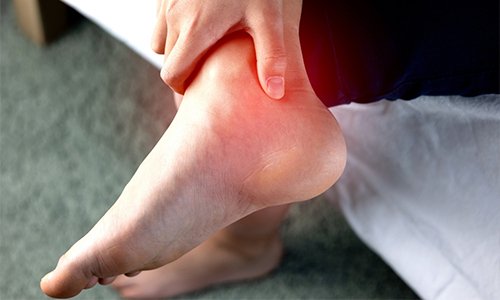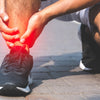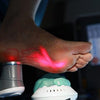Achilles Tendinitis: Causes, Symptoms, Treatment, and Prevention

Achilles Tendinitis: An Overview
The Achilles tendon connects the calf muscles to the heel bone (calcaneus) and is in charge of delivering the calf muscles' force to the foot. It facilitates movement in the ankle joint, which is necessary for many activities such as walking, running, and jumping. Achilles tendinitis occurs when this tendon gets inflamed as a result of overuse or severe tension.
Achilles Tendinitis Causes
1. Overuse and Repetitive Stress: Activities such as jogging, jumping, or abrupt increases in physical activity can cause tendinitis.
2. Inadequate Footwear: Wearing shoes that do not provide adequate support or cushioning, or that do not fit properly, might contribute to the development of Achilles tendonitis.
3. Biomechanical Factors: Foot structure abnormalities, such as flat feet or high arches, might affect the mechanics of the Achilles tendon and increase the risk of tendinitis.
4. Tight Muscles and Tendons: Tight calf muscles or Achilles tendons can place extra strain on the Achilles tendon, making it more susceptible to injury.
5. Age: As we get older, our tendons become less flexible and more prone to damage, which is why middle-aged and older people are more prone to Achilles tendinitis.
Achilles Tendinitis Symptoms
Achilles tendonitis can result in the following symptoms:
1. Achilles Tendon Pain and Stiffness: Pain and stiffness in the Achilles tendon, which is usually located at the rear of the heel. Pain can range from minor to severe and disrupt daily activities.
2. Swelling: The affected area may swell, become painful, and warm to the touch.
3. Tenderness: When touched or pressed, the Achilles tendon may become tender.
4. Morning Stiffness: Achilles tendon stiffness and soreness that is often worse in the morning or after periods of rest.
5. Tendon Thickening: In chronic situations, the Achilles tendon might thicken and tiny nodules can form along its length.
6. Limited Flexibility and Range of Motion: The ankle joint has limited flexibility and range of motion.
Achilles Tendinitis Treatment Options
1. Leisure and Limited Activity: Rest is essential for the healing of an inflamed Achilles tendon. It is crucial to reduce or adjust activities that aggravate the condition.
2. Ice and Elevation: Applying ice to the affected area and elevating the foot will help reduce swelling and pain.
3. Stretching and Strengthening Exercises: Specific calf and Achilles tendon stretching and strengthening exercises can improve flexibility and offer support for the tendon.
4. Orthotic Inserts: Orthotic inserts, custom or over-the-counter, can assist correct
bio mechanical abnormalities and relieve strain on the Achilles tendon.
5. Non-Steroidal Anti-Inflammatory Drugs (NSAIDs): When used as indicated, over-the-counter NSAIDs can provide temporary pain relief and reduce inflammation. Before using them on a regular basis, consult a healthcare practitioner.
6. Physical Therapy: A physical therapist can design a customized treatment plan that includes exercises, manual therapy, and modalities such as ultrasound or electrical stimulation.
7. Night Splints: Wearing night splints while sleeping will assist keep the Achilles tendon stretched, decreasing morning stiffness.
8. Eccentric exercises: Physical activities in which you extend the Achilles tendon while under tension, have shown potential in the treatment of Achilles tendinitis.
9. Corticosteroid Injections: A doctor may offer corticosteroid injections to relieve inflammation and pain in severe situations. However, because of the potential for negative effects, these should be used with caution.
Achilles tendinitis is a painful ailment that can limit a person's ability to engage in physical activity. It can, however, be properly treated with sufficient care, and preventive measures can be implemented to limit the chance of recurrence. Individuals can maintain the health and function of their Achilles tendon by prioritizing rest, correct footwear, stretching, and other self- care measures, allowing them to remain active and pain-free. If you suspect Achilles tendinitis
or have prolonged symptoms, see a doctor for a proper diagnosis and treatment.





